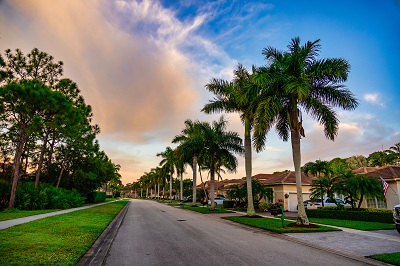In nearly one-third of the nation’s 100 largest housing markets, home prices have fallen by at least one percent from recent highs, according to ICE Mortgage Technology’s latest report. Several of these markets have even posted double-digit declines, signaling a growing shift in pricing momentum.
As housing inventory continues to climb—especially in the Sunbelt and parts of the West—many markets are seeing increased price softening, even as homebuyers stretch financially to qualify for mortgages amid high rates.
📉 Where Prices Are Dropping the Most
Thirty-one metro areas have seen home prices fall by 1% or more from their peaks. Some—like Austin, Texas (–19.7%) and Cape Coral, Florida (–13.3%)—have experienced far steeper corrections.
“The number of markets experiencing annual price declines may continue to rise in the months ahead,” ICE analysts noted.
Markets with the largest price drops from peak:
| City | Price Change |
|---|---|
| Austin, TX | –19.7% |
| Cape Coral, FL | –13.3% |
| North Port, FL | –11.2% |
| San Francisco, CA | –8.9% |
| Phoenix, AZ | –5.7% |
| San Antonio, TX | –5.2% |
| Boise, ID | –5.2% |
| Denver, CO | –3.6% |
| Dallas, TX | –3.2% |
| Sacramento, CA | –3.0% |
| San Jose, CA | –2.9% |
| Miami, FL | –2.3% |
| Colorado Springs, CO | –2.3% |
| San Diego, CA | –1.3% |
| Riverside, CA | –1.1% |
| … and others |
🏡 Inventory Rising Fast in Key Markets
ICE reports that housing inventory is rebounding quickly, especially in markets like Denver (listings up 100% from 2017–2019 levels), Lakeland, FL, and Colorado Springs (both up 87%).
In California, the 10 largest metro areas have seen inventory rise by 42% to 75% over the past 12 months. While only San Francisco, San Jose, and Stockton have fully normalized, seven others are expected to catch up by year-end—potentially exerting further downward pressure on prices.
📊 Market Trends at a Glance
-
National home price growth slowed to just +0.3% (seasonally adjusted annual rate) in early June.
-
41 markets—mostly in the Sunbelt and West—posted month-over-month price declines in June.
-
Midwest and Northeast markets remain more resilient, still showing modest price appreciation.
⚠️ Affordability at Breaking Point
Buyers face tighter credit standards and high debt burdens:
-
Average DTI (debt-to-income): 40%
-
Average credit score: 738
-
Average purchase loan: $375,000
-
Loan-to-value (LTV) ratios now exceed 85%
To bridge affordability gaps:
-
5% of buyers are turning to adjustable-rate mortgages (ARMs)
-
3% are opting for temporary interest rate buydowns
💸 Underwater Homeowners on the Rise
As prices fall in some markets, more homeowners are slipping into negative equity:
-
538,000 homeowners are now underwater (up from 339,000 a year ago)
-
An additional 2.5 million have less than 10% equity
-
A 10% drop in home values would push many of those borrowers underwater
Borrowers with low down payments are especially vulnerable:
-
5% of VA loans and 2.6% of FHA loans are currently underwater
-
Student loan debt is a compounding issue—affecting 30% of FHA and 20% of VA borrowers
🔍 What It Means Going Forward
-
Price declines are no longer limited to a few overheated markets—they’re spreading across the West and Sunbelt
-
Rising inventory and persistent rate pressure are cooling demand and price growth
-
Borrowers with thin equity and higher debt loads are at growing risk if prices drop further
-
While opportunity may be growing for buyers, affordability and risk management are key themes heading into the second half of 2025












